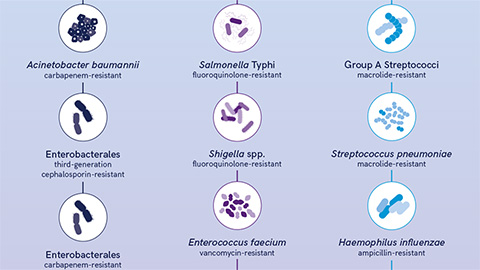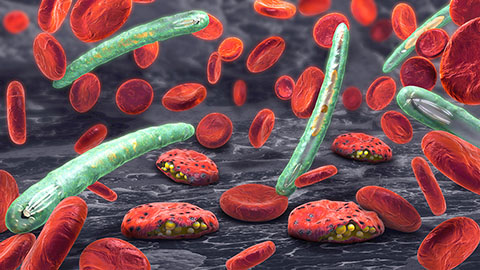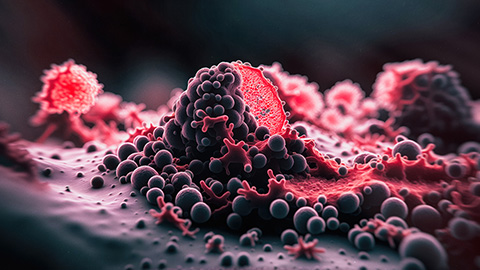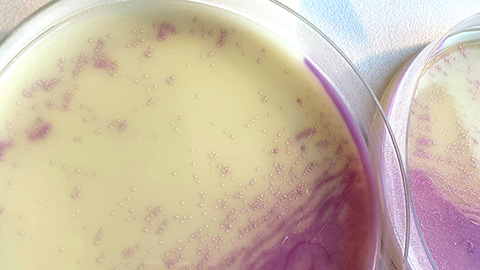MCP: Infant gut microbes’ thirst for milk glycoproteins
Milk is a complicated liquid. Among its ingredients, which include lactose, lipids, free oligosaccharides and proteins, the free oligosaccharides perform the essential prebiotic roles of stimulating the growth of beneficial bacteria and preventing harmful bacteria from binding to epithelial cells in the gut. In a paper recently published in Molecular & Cellular Proteomics, researchers at the University of California, Davis, report that the bacteria in infants’ guts are also capable of digesting glycoproteins.
.jpg)
The researchers previously had thought of glycoproteins as a source of carbohydrate-bound amino acids that were only consumed by the infant, “but it turns out that parts of it, particularly the oligosaccharide, may also be feeding the microbiota,” explains Carlito Lebrilla, the paper’s senior author. “It has a dual use here — to give nutrition to the host, but also to enhance the microbiota.”
The new paper is a unification of sorts for the researchers, who have focused on the oligosaccharide components of human milk for a number of years and had an interest in the interactions between the microbiota and oligosaccharides.
While there was a good deal of research involving the milk oligosaccharides, Lebrilla explains, he and his colleagues hadn’t scrutinized what happens after the milk oligosaccharides interact with the microbiota. “This is one of the first times we’ve looked … in deep structural detail at what happens to the actual compounds as they go through” the gut, he says.
To determine the effects of digestion on the oligosaccharide portions of glycoproteins in breast milk, the researchers collected breast milk and stool samples from mother–infant pairs enrolled in the university’s Foods for Health Institute Lactation Study. They then isolated and cultured the dominant bacterial subspecies of Bifidobacteria longum from the stool samples. B. longum, in aggregate, accounts for up to 90 percent of the gut microbiota in milk-fed infants.
The investigators fed the bacteria the milk glycoproteins extracted from the breast milk. After demonstrating that the bacteria were breaking down the glycoproteins, Lebrilla’s group obtained a detailed profile of the oligosaccharides that had been released from the glycoproteins by subjecting the fecal samples to tandem mass spectrometry. The researchers were surprised to find the presence of degraded N-glycans in the fecal samples. N-glycans had been hypothesized as digestive targets because they were present in breast milk, but until now, they had not been observed post-digestion. The finding by Lebrilla and colleagues indicates that the bacterial species act upon the oligosaccharide components of the compound, which suggests the sugar moieties on breast milk glycoproteins can fuel the gut microbiome.
A collaborating group led by David Mills at the university’s Foods for Health Institute then sequenced the bacteria to get a comprehensive look at which enzymes were responsible for breaking down the milk oligosaccharides and when they were expressed, as well as their specificity. They found that one of the subspecies of B. longum contained genes for a glycoprotein-cleaving endoglycosidase. The researchers also noted that an exogalactosidase, BLNG_00015, was present in another dominant B. longum subspecies and capable of degrading glycoproteins with a terminal monosaccharide galactose residue. This, Lebrilla explains, is evidence of the specificity of the microbial enzymes for the glycoproteins.
Future work for Lebrilla and his colleagues will include examining the milk proteins that are being deglycosolated, exploring why certain milk protein concentrations seem to confer greater protection against stunting in infants than others, and investigating how the microbiota change in humans from a milk-oriented micobiota to a plant-based microbiota as we age.
Enjoy reading ASBMB Today?
Become a member to receive the print edition four times a year and the digital edition monthly.
Learn moreGet the latest from ASBMB Today
Enter your email address, and we’ll send you a weekly email with recent articles, interviews and more.
Latest in Science
Science highlights or most popular articles

A biological camera: How AI is transforming retinal imaging
AI is helping clinicians see a more detailed view into the eye, allowing them to detect diabetic retinopathy earlier and expand access through tele-ophthalmology. These advances could help millions see a clearer future.

AI in the lab: The power of smarter questions
An assistant professor discusses AI's evolution from a buzzword to a trusted research partner. It helps streamline reviews, troubleshoot code, save time and spark ideas, but its success relies on combining AI with expertise and critical thinking.

Training AI to uncover novel antimicrobials
Antibiotic resistance kills millions, but César de la Fuente’s lab is fighting back. By pairing AI with human insight, researchers are uncovering hidden antimicrobial peptides across the tree of life with a 93% success rate against deadly pathogens.

AI-designed biomarker improves malaria diagnostics
Researchers from the University of Melbourne engineered Plasmodium vivax diagnostic protein with enhanced yield and stability while preserving antibody-binding, paving the way for more reliable malaria testing.

Matrix metalloproteinase inhibitor reduces cancer invasion
Scientists at the Mayo Clinic engineered a TIMP-1 protein variant that selectively inhibits MMP-9 and reduces invasion of triple-negative breast cancer cells, offering a promising tool for targeted cancer research.

Antibiotic sensor directly binds drug in resistant bacteria
Researchers at Drexel University uncover how the vancomycin-resistant bacterial sensor binds to the antibiotic, offering insights to guide inhibitor design that restores antibiotic effectiveness against hospital-acquired infections.

